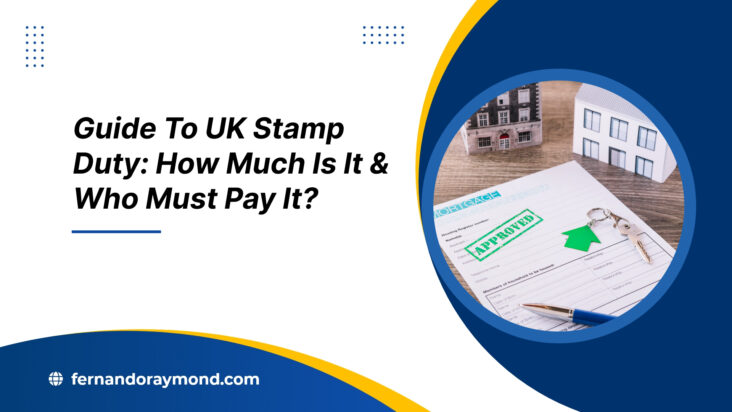As a property owner and landlord in the UK property business, I had to pay stamp duty on my second home and buy to let properties.
I have researched about what us stamp duty and is there anyways in the UK laws to reduce or mitigate the Stamp duty charges. Because this cost adds up and accounts for a large sum as the property value is higher.
If you are looking to buy a property or want to know what is Stamp duty, this is your guide. However I advise you speaking to a mortgage broker and know more details.

Here’s the comprehensive guide on what stamp duty is and who pays it when buying property in the UK:
What is Stamp Duty?
Stamp Duty, also known as Stamp Duty Land Tax (SDLT), is a tax imposed by the UK government on the purchase of property or land in England, Wales, and Northern Ireland. It is calculated based on the purchase price or the market value of the property, whichever is higher. Scotland has a separate tax called the Land and Buildings Transaction Tax (LBTT) which operates differently.
Who Pays Stamp Duty?
Stamp Duty is typically paid by the buyer of the property, although there are some instances where the seller may be responsible for it, such as in certain commercial property transactions. The person who is liable to pay Stamp Duty depends on the type of property being purchased and the circumstances of the transaction.
Residential Properties:
For residential properties, the buyer is responsible for paying Stamp Duty. This includes properties that are bought outright, as well as those acquired through a mortgage or as part of a shared ownership scheme. The amount of Stamp Duty payable depends on the purchase price or market value of the property and is usually paid by the buyer’s solicitor or conveyancer to HM Revenue & Customs (HMRC) within 30 days of completion of the purchase.
First-Time Buyers:
First-time buyers in the UK may be eligible for a reduced rate of Stamp Duty or even complete exemption, depending on the purchase price of the property. As of the latest information cutoff date (September 2021), first-time buyers are exempt from Stamp Duty on properties worth up to £300,000 and receive a reduced rate on properties priced between £300,001 and £500,000. It’s important to check the latest government guidelines and eligibility criteria to determine the Stamp Duty rates applicable for first-time buyers.
Additional Property Purchases:
If you are purchasing an additional property, such as a second home or a buy-to-let property, you may be subject to higher rates of Stamp Duty. As of the latest information cutoff date (September 2021), an additional 3% Stamp Duty surcharge applies to the purchase of additional residential properties above certain price thresholds. It’s important to seek professional advice to understand the additional Stamp Duty obligations for such purchases.
Other Circumstances:
In some cases, exemptions or reliefs may apply for certain types of transactions, such as transfers of property as gifts or between spouses or civil partners, or properties acquired by a company. However, it’s essential to seek professional advice to understand the specific circumstances and applicable exemptions or reliefs.
How much is stamp duty in the UK on land tax?
As of the latest information cutoff date (September 2021), the rates for Stamp Duty Land Tax (SDLT) in England, Wales, and Northern Ireland for residential properties are as follows:
- Up to £125,000: 0%
- £125,001 to £250,000: 2%
- £250,001 to £925,000: 5%
- £925,001 to £1.5 million: 10%
- Above £1.5 million: 12%
It’s important to note that there is a different rate structure for properties purchased as an additional property, such as a second home or a buy-to-let property. As of September 2021, an additional 3% surcharge applies on top of the standard rates for additional residential properties.
For example, if you are purchasing a residential property in England, Wales, or Northern Ireland for £300,000 as a first-time buyer, the SDLT calculation would be as follows:
- 0% on the first £125,000 = £0
- 2% on the portion between £125,001 and £250,000 = £2,500
- 0% on the remaining £50,000 (as it falls within the first-time buyer exemption limit) = £0
So the total SDLT payable would be £2,500.
It’s important to note that SDLT rates and thresholds are subject to change, and it’s essential to check the latest government guidelines and seek professional advice to accurately calculate the SDLT payable for your specific property purchase in the UK.
You can read the latest updated figures on https://www.gov.uk/stamp-duty-land-tax/residential-property-rates
Conclusion:
In summary, Stamp Duty is a tax levied on the purchase of property or land in the UK. It is typically paid by the buyer, although there are exceptions where the seller may be liable.
The amount of Stamp Duty payable depends on the purchase price or market value of the property, and different rates may apply for first-time buyers, additional property purchases, or other specific circumstances.
It’s important to seek professional advice from a solicitor, conveyancer, or tax advisor to understand the Stamp Duty obligations and any exemptions or reliefs that may apply to your specific situation.
I highly advice you get in touch with expert on UK property dealings and I have been working with BVS mortgages and financial services.








GIPHY App Key not set. Please check settings